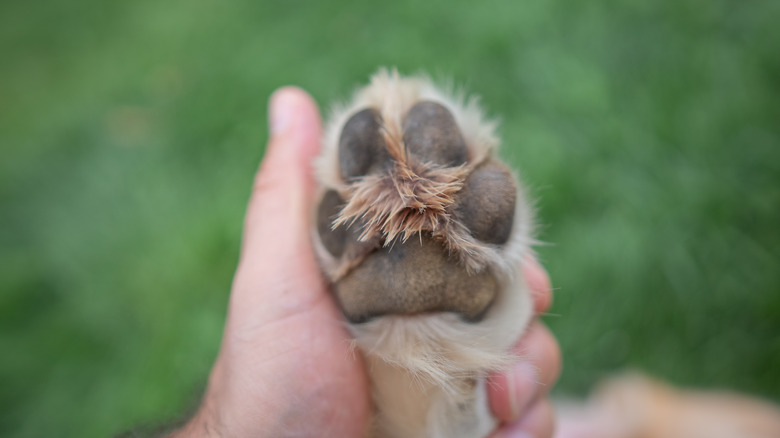Spring is the best growing season for most U.S. gardeners, and any homeowner worth their vibrant green grass blades knows it’s the right time to fertilize a lawn. Whether you plan to spread plant food around yourself or hire a company to take care of the task for you, there are a few safety rules you need to keep in mind post-application — namely, how long you should keep everyone, Scruffy the pup included, off the grass. Lawn fertilizer is, after all, harmful to your health if mismanaged. But how long is long enough? The answer to this vital question varies depending on the type of fertilizer you use and who made it, but experts advise anywhere from 30 minutes to 72 hours.
So, why the wait? Chemical fertilizers (also sometimes called mineral fertilizers) contain concentrated ingredients called nitrates that make them toxic when ingested. Children and pets are more vulnerable to harm from nitrates in fertilizer since they’re more likely to pick up a pellet of the granular variety and eat it or play on grass treated with the liquid form and touch their hands to their faces afterward. Some fertilizers, especially those containing high amounts of nitrogen (a common form of nitrate), can burn the skin, too. Homeowners should cover up with long sleeves and long pants when mixing or applying lawn fertilizers, or if they really must enter the yard immediately after fertilizing, though that’s ill-advised.
Liquid or granular fertilizer?

Two standard fertilizer types are available to buy: liquid and granular. You spray liquid fertilizer onto your lawn, which coats the blades of grass and the soil below. It dries relatively quickly; recommended wait times start at half an hour and end at five hours. The key with this type of fertilizer is to wait until the liquid is completely dry to the touch on the lawn and ground. Granular fertilizer, where the plant food is processed into tiny pellets and sprinkled around the property, needs much longer to break down and absorb into the soil. Expect to wait anywhere from 12 to 72 hours before being able to use your yard — the shorter end of this time is applicable if it rains (you’ll need a quarter inch) or if you water the lawn.
These are, of course, general fertilizer application wait-time guidelines. Recommended timeframes vary between manufacturers. Always read the application instructions on a bottle or package of fertilizer from start to finish, even if you’ve used that fertilizer before. If in doubt, call or email the maker and ask what they recommend before application, or wait the longest among the times listed above before stepping out onto your lawn with your kids or pets.
Can you trust pet-safe labels?

Some fertilizers labeled “pet-safe” or “pet-friendly” can be trusted — to some extent — as safe for animals and humans, especially if they’re also EPA-approved, labeled organic, and, if at all possible, animal-by-product-free. Fertilizers containing animal products may encourage your pet to chow down on it. Seaweed, grass clippings, compost, and potash all fall into the safe category. If you don’t have access to any of these options or your plants aren’t a fan, manure, blood-and-bone meal, and fish emulsion (a fishy fertilizer that’s actually great for your lawn) are also organic, though they contain animal by-products.
If your kiddos or furry companions enter the yard before the ban ends, get them back inside as quickly as possible. Remove the children’s shoes at the back doorstep and immediately wash their hands and faces. If you recently applied granular fertilizer, carefully monitor your pets when they’re out in the yard for the first time after application (following the respective wait times listed above). To be on the safe side, you should also check over your dog’s, cat’s, or ferret’s fur and paws for stray pellets, as you don’t want them tracked inside. Remove and safely dispose of any you find. If your furry friend is desperate to go out, and it still isn’t safe, take them to a nearby park instead of letting them out into your yard.



